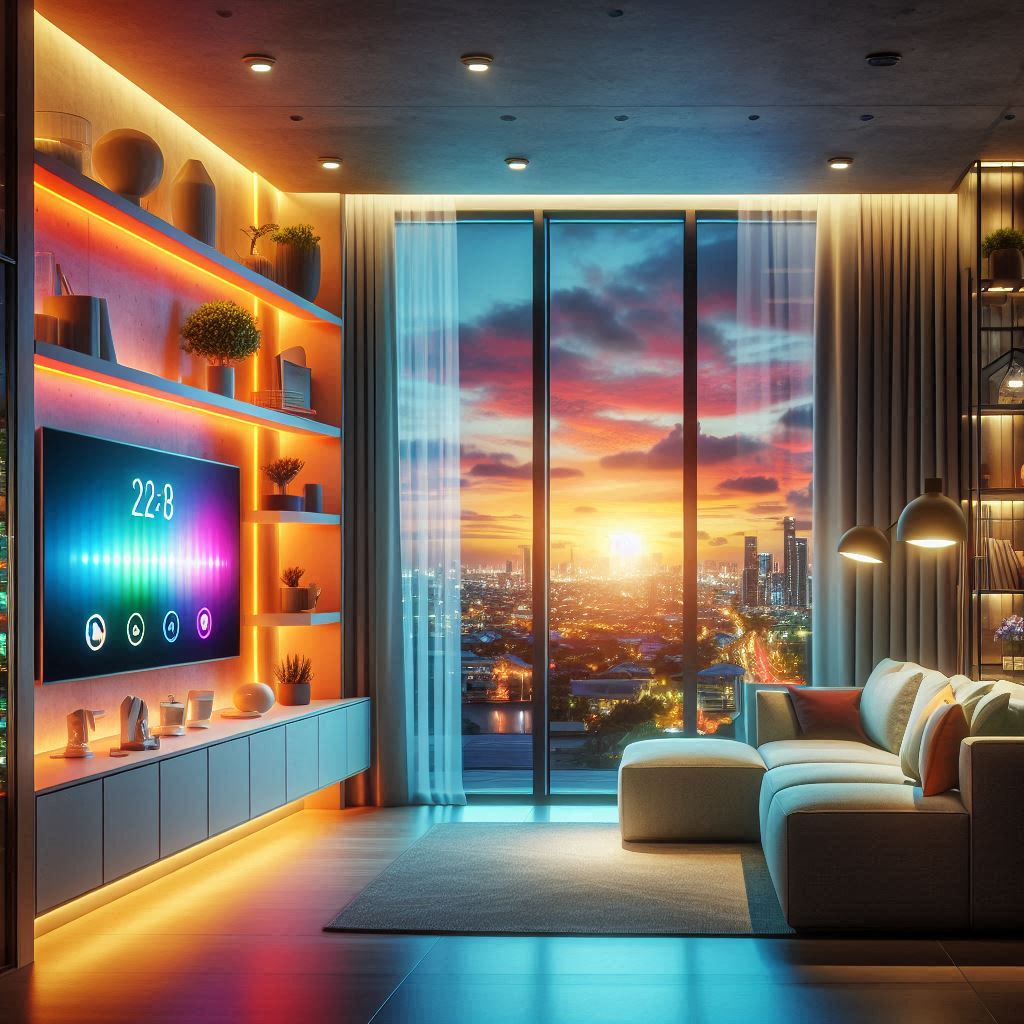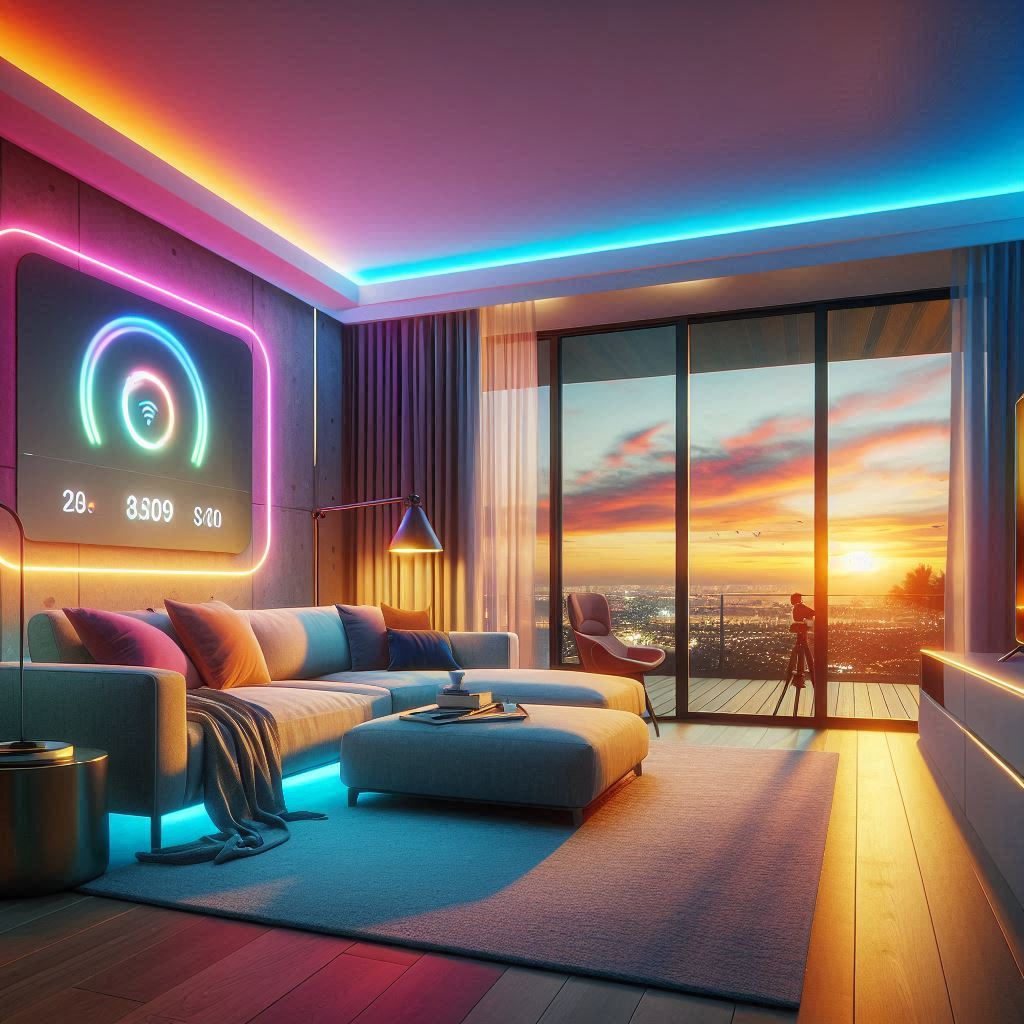The smart lighting industry has undergone a remarkable transformation in recent years, largely driven by advancements in artificial intelligence (AI). As homes, offices, and cities become increasingly connected, the integration of AI into smart lighting systems has revolutionized how we interact with and manage lighting solutions.
The Role of AI in Smart Lighting Systems
Smart lighting refers to advanced lighting systems that can be controlled remotely, automated, or programmed to adapt to specific needs. The introduction of AI has elevated these systems to new heights, enabling them to learn, adapt, and optimize based on user behavior and environmental conditions. How AI impacts and transforms the smart lighting industry is evident in its ability to process vast amounts of data and make real-time decisions, creating lighting solutions that are both intelligent and energy-efficient.
AI-powered smart lighting systems use sensors, machine learning algorithms, and data analytics to monitor and adjust lighting based on factors such as occupancy, natural light levels, and user preferences. For instance, an AI-driven lighting system in an office can dim lights in unoccupied areas, saving energy while maintaining optimal illumination in active spaces. This seamless integration of AI enhances both functionality and sustainability, making it a cornerstone of modern smart lighting solutions.
The global smart lighting market is anticipated to grow from USD 9.86 billion in 2025 to USD 17.38 billion by 2030, growing at a compound annual growth rate (CAGR) of 12.0% during the forecast period.
Download PDF Brochure @ https://www.marketsandmarkets.com/pdfdownloadNew.asp?id=985
Enhancing Energy Efficiency Through AI
One of the most significant ways how AI impacts and transforms the smart lighting industry is through improved energy efficiency. With growing concerns about climate change and rising energy costs, energy-efficient lighting solutions have become a priority for consumers and businesses alike. AI enables smart lighting systems to optimize energy consumption by analyzing usage patterns and environmental data.
For example, AI algorithms can predict when and where lighting is needed, reducing unnecessary energy use. In commercial buildings, AI-powered lighting systems can adjust brightness based on the time of day or occupancy levels, ensuring that energy is not wasted in empty rooms. In residential settings, AI can learn a household’s daily routines and automatically adjust lighting to minimize consumption while maintaining comfort. This focus on energy efficiency not only reduces costs but also aligns with global sustainability goals, making AI a game-changer in the smart lighting industry.
Personalization and User Experience
Another key area where how AI impacts and transforms the smart lighting industry is in delivering personalized user experiences. Traditional lighting systems offer limited control, often requiring manual adjustments. In contrast, AI-powered smart lighting systems can adapt to individual preferences, creating tailored lighting environments that enhance comfort and productivity.
For instance, AI can analyze a user’s lighting preferences over time and automatically adjust color temperatures or brightness levels to suit specific activities, such as reading, working, or relaxing. In smart homes, AI can integrate with voice assistants like Amazon Alexa or Google Assistant, allowing users to control lighting with simple voice commands. This level of personalization not only improves user satisfaction but also makes smart lighting systems more intuitive and accessible.
AI and Adaptive Lighting in Smart Cities
The impact of AI on the smart lighting industry extends beyond individual homes and offices to entire cities. As urban areas embrace the concept of smart cities, AI-powered lighting systems are playing a critical role in creating sustainable and efficient urban environments. How AI impacts and transforms the smart lighting industry in this context is evident in the development of adaptive street lighting systems.
AI-driven streetlights can adjust their brightness based on real-time data, such as traffic flow, pedestrian activity, or weather conditions. For example, during low-traffic hours, AI can dim streetlights to save energy, while increasing brightness in high-traffic areas to enhance safety. Additionally, AI can detect and report maintenance issues, such as malfunctioning lights, reducing downtime and improving public safety. By integrating AI into smart city infrastructure, municipalities can achieve significant energy savings and create safer, more livable urban spaces.
Integration with IoT and Smart Ecosystems
The Internet of Things (IoT) is a key enabler of smart lighting, and AI enhances its capabilities by providing intelligent decision-making. How AI impacts and transforms the smart lighting industry is closely tied to its integration with IoT devices, creating interconnected ecosystems that work seamlessly together. For example, AI-powered smart lighting can communicate with other IoT devices, such as thermostats, security cameras, and motion sensors, to create a fully automated environment.
In a smart home, AI can coordinate lighting with other systems to enhance security. For instance, if a security camera detects motion outside, the AI can trigger exterior lights to illuminate, deterring potential intruders. Similarly, in commercial settings, AI can integrate lighting with HVAC systems to optimize energy use across the building. This synergy between AI, IoT, and smart lighting creates a holistic approach to automation, improving efficiency and convenience.
AI-Driven Predictive Maintenance
Maintenance is a critical aspect of any lighting system, and AI is revolutionizing how it is managed in the smart lighting industry. How AI impacts and transforms the smart lighting industry includes its ability to predict and address maintenance needs before they become significant issues. By analyzing data from sensors and lighting fixtures, AI can identify patterns that indicate potential failures, such as flickering lights or declining performance.
Predictive maintenance powered by AI reduces downtime and extends the lifespan of lighting systems, saving costs for businesses and municipalities. For example, in a smart city, AI can monitor thousands of streetlights and prioritize maintenance tasks based on urgency, ensuring that resources are used efficiently. This proactive approach to maintenance is a testament to the transformative power of AI in the smart lighting industry.
Challenges of Implementing AI in Smart Lighting
While the benefits of AI in smart lighting are undeniable, there are challenges to consider. How AI impacts and transforms the smart lighting industry also involves addressing issues such as high initial costs, data privacy concerns, and the need for technical expertise. Implementing AI-powered lighting systems requires significant investment in hardware, software, and infrastructure, which can be a barrier for smaller organizations or developing regions.
Data privacy is another concern, as AI systems rely on collecting and analyzing user data to function effectively. Ensuring that this data is securely stored and used ethically is critical to maintaining consumer trust. Additionally, the complexity of AI systems requires skilled professionals to design, install, and maintain them, which may pose a challenge in regions with limited access to technical expertise. Despite these challenges, the long-term benefits of AI in smart lighting far outweigh the initial hurdles, driving continued adoption across industries.
The Future of AI in Smart Lighting
Looking ahead, the future of how AI impacts and transforms the smart lighting industry is incredibly promising. As AI technology continues to evolve, we can expect even more sophisticated lighting solutions that push the boundaries of innovation. For instance, advancements in machine learning could enable smart lighting systems to anticipate user needs with greater accuracy, creating hyper-personalized environments.
In smart cities, AI could integrate with other emerging technologies, such as 5G and edge computing, to create ultra-responsive lighting networks that adapt to real-time conditions. Additionally, the focus on sustainability will drive the development of AI systems that further optimize energy use, helping to combat climate change. As AI becomes more accessible and affordable, its adoption in the smart lighting industry will accelerate, transforming how we illuminate our world.
The integration of AI into the smart lighting industry has ushered in a new era of innovation, efficiency, and personalization. How AI impacts and transforms the smart lighting industry is evident in its ability to optimize energy use, enhance user experiences, and create adaptive, sustainable lighting solutions. From smart homes to smart cities, AI is redefining how we interact with light, making it more intelligent and responsive to our needs.
As challenges like cost and data privacy are addressed, the adoption of AI-powered smart lighting will continue to grow, shaping the future of illumination. By embracing AI, the smart lighting industry is not only meeting the demands of today’s connected world but also paving the way for a brighter, more sustainable tomorrow. Whether you’re a homeowner, business owner, or city planner, understanding how AI impacts and transforms the smart lighting industry is key to unlocking its full potential.


